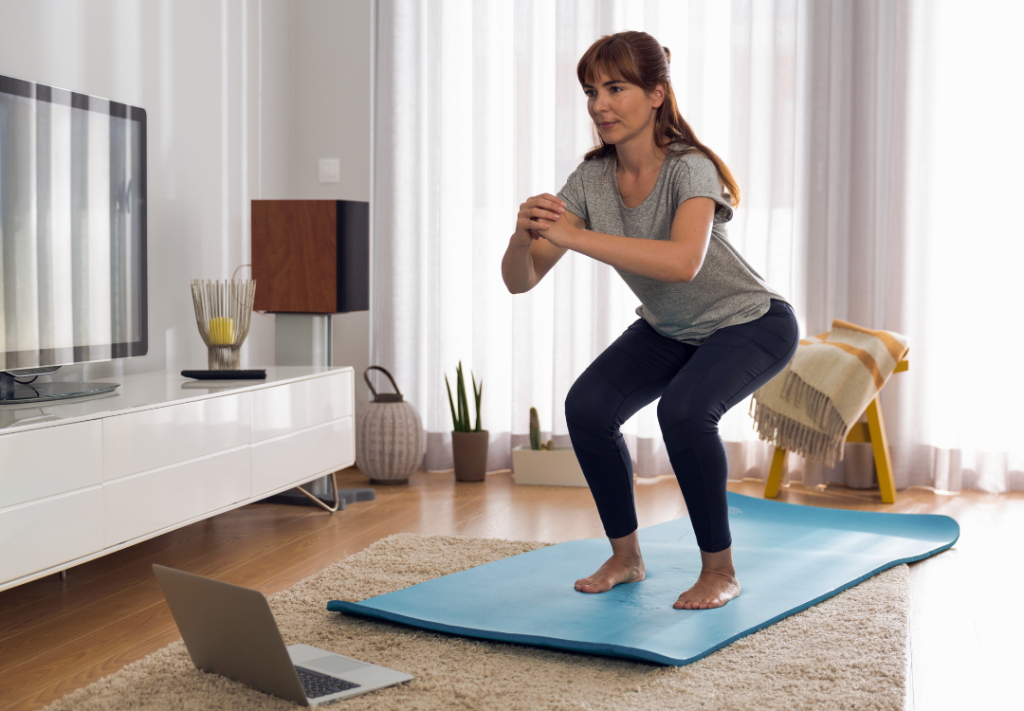Regular fitness monitoring at home is an essential part of maintaining a healthy lifestyle and achieving fitness goals. Here’s why it’s important:
1. Tracking Progress
- Visible Results: Monitoring your fitness allows you to see improvements over time, such as weight loss, strength gain, or increased endurance. This helps you stay motivated.
- Personalized Adjustments: Regular tracking lets you adjust your workouts or diet based on your progress. If you’re not seeing results, you can tweak your routine accordingly.
2. Preventing Injuries
- Form and Technique: By regularly checking on your fitness progress, you can ensure you’re performing exercises correctly. This helps avoid injuries from improper form or overexertion.
- Listen to Your Body: Monitoring helps you understand how your body responds to exercise, allowing you to prevent pushing yourself too hard, which could lead to injury.
3. Accountability
- Staying on Track: Consistent monitoring at home can help you stay committed to your fitness goals. It’s easy to get distracted or give up without seeing your progress.
- Encouragement: When you see improvements, it provides a psychological boost to continue your fitness journey, keeping you accountable to your goals.
4. Adapting to Changes
- Lifestyle Adjustments: As life circumstances change, your fitness needs might shift too. Regular monitoring helps you notice when you need to adapt your routines to accommodate new goals, changes in health, or a busier schedule.
- Seasonal Variations: Fitness levels can fluctuate due to changes in seasons, energy levels, or health. Monitoring can help you adjust your expectations and workouts accordingly.
5. Understanding Your Body
- Heart Rate and Blood Pressure: At-home monitoring of heart rate or blood pressure can help you track cardiovascular health. This is especially important for people with health conditions or those wanting to improve cardiovascular fitness.
- Resting and Active Recovery: Tracking how your body recovers after intense exercise helps you understand when it’s time to rest or push harder.
6. Motivation and Confidence
- Positive Feedback: Monitoring provides positive reinforcement when you hit milestones, whether it’s running a certain distance, lifting heavier weights, or feeling stronger. This can boost confidence and keep you going.
- Creating a Routine: Seeing consistent progress through monitoring can help you establish a routine that becomes a part of your daily life, making fitness a habit.
7. Setting and Refining Goals
- Achievable Targets: Regular tracking of fitness metrics helps you set realistic and achievable goals. Whether it’s losing a certain number of pounds, increasing flexibility, or improving stamina, monitoring helps you focus on specific outcomes.
- Refining Strategies: As you track your goals, you can assess which strategies are working and which need refinement. This leads to smarter, more effective fitness planning.
8. Mental Well-being
- Stress Relief: Regular exercise improves mental health, and tracking your fitness progress gives you a sense of accomplishment, which can reduce stress and improve mood.
- Self-Empowerment: Monitoring your fitness journey empowers you to take control of your health, promoting a sense of achievement and personal growth.
Conclusion:
Fitness monitoring at home is a powerful tool for staying on track with your fitness goals, preventing injuries, and maintaining motivation. It helps you adapt your routine, track progress, and ensure you’re prioritizing your health in the best possible way. Whether you’re a beginner or an experienced athlete, regular monitoring brings consistency and focus to your fitness journey.

